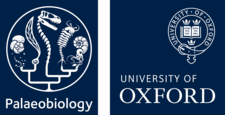The Coniacian Working Group of the Cretaceous Subcommission on Stratigraphy has recommended the First Occurrence (FO) of the inoceramid bivalve Cremnoceramus rotundatus (sensu Tröger non Fiege) as criterion for recognising the Turonian-Coniacian boundary. This boundary lies between the LO of the ammonite Prionocyclus germari (uppermost Turonian of Eurasia and North America), and the FOs of the ammonites Forresteria (Harleites) petrocoriensis (Europe) and F. peruana and F. brancoi (North America), thus preserving the sense of the original ammonite definition of the boundary. The working group further recommends that: - the Lower-Middle Coniacian substage boundary be drawn at the FO of the inoceramid Volviceramus koeneni and, where ammonites are preserved, at or near the FO of Peroniceras (Peroniceras) tridorsatum, - the Middle-Upper Coniacian boundary be drawn at the FO of the cosmopolitan inoceramid, Magadiceramus subquadratus. The Coniacian Working Group unanimously recommended the Salzgitter-Salder Quarry section, near Salzgitter-Salder, Lower Saxony, Germany, as the Turonian-Coniacian boundary stratotype. The T-C boundary at this quarry is placed in bed MK-47 of the WOOD et al. (1984) section, above the Didymotis ecoevent II and the flood occurrence of Cremnoceramus? waltersdorfensis waltersdorfensis. No stratotype sections were recommended for the Coniacian substages because the data in support of any one of the two candidates have not yet been fully developed. Under study are the lower Austin Chalk of the Dallas-Fort Worth area of Texas, and the Seaford Head exposures of the Upper Chalk in southern England.



